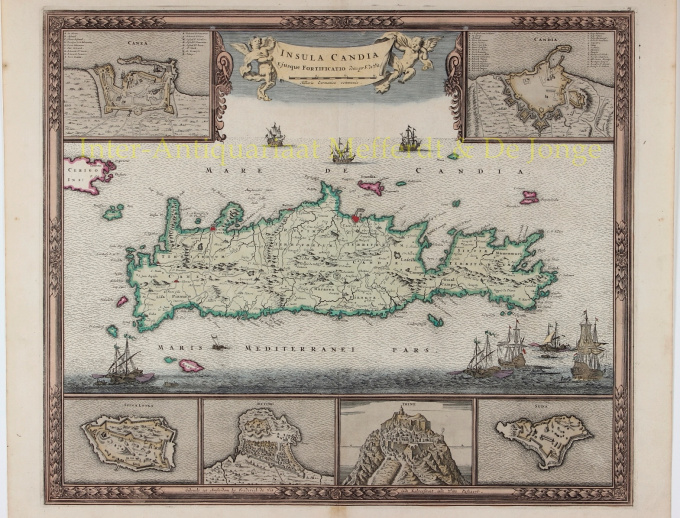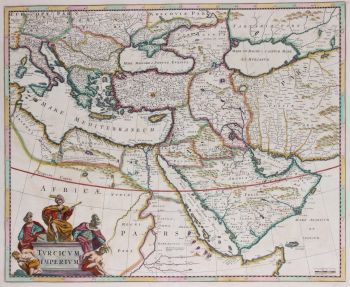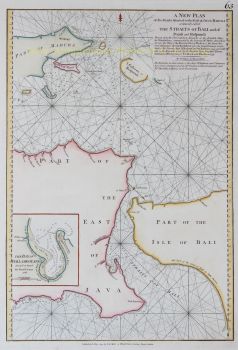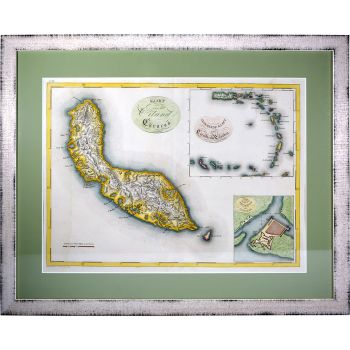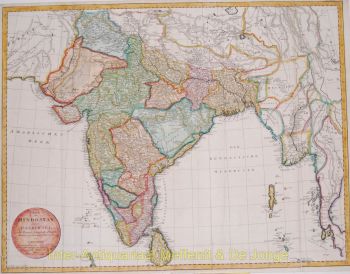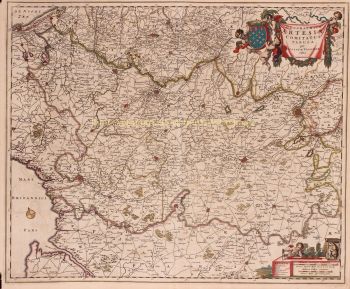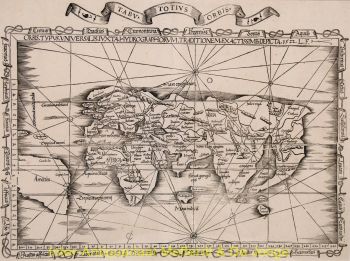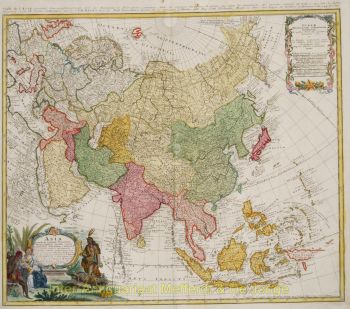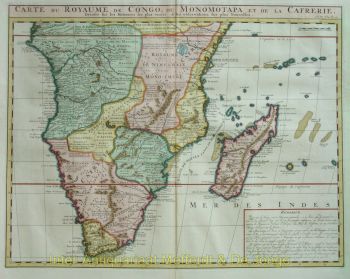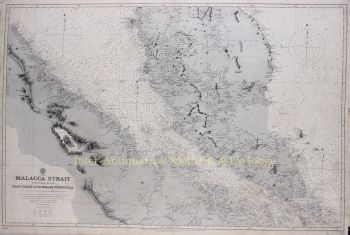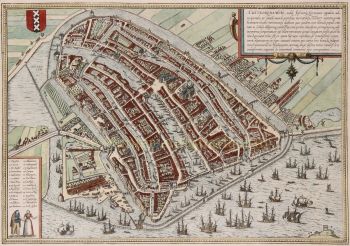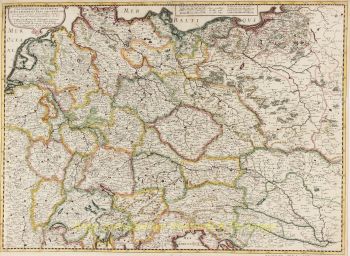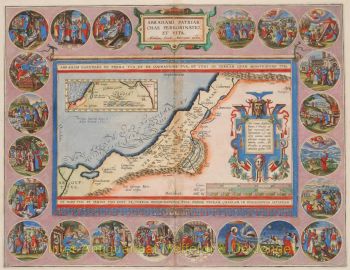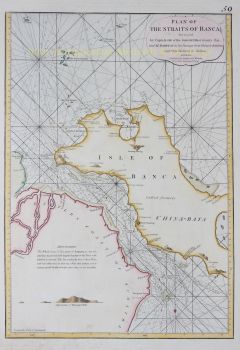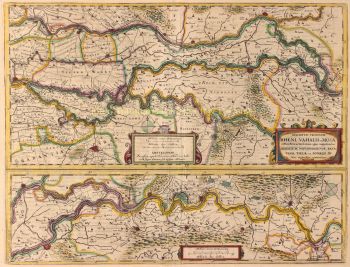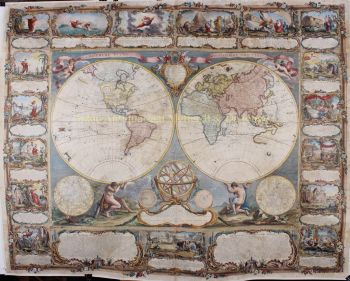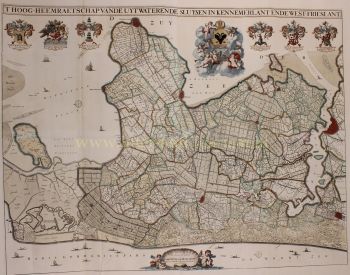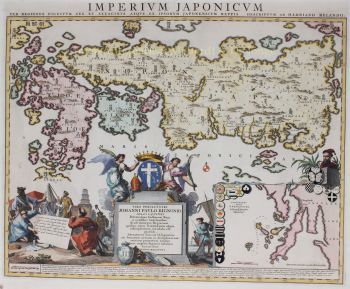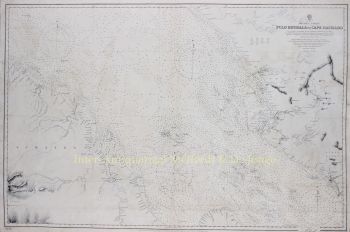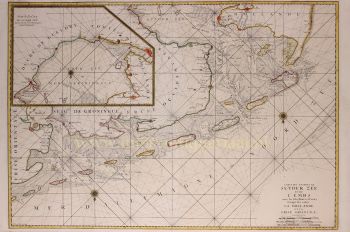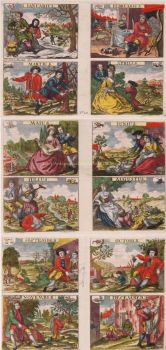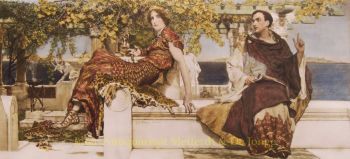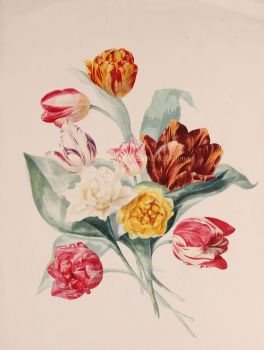Carte de la Crète 1680
Frederick de Wit
€ 1.450
Inter-Antiquariaat Mefferdt & De Jonge
- Sur l'oeuvre d'artMAP OF CRETE "Insula Candia Ejusque Fortificatio. "Copper engraving by Frederick de Wit, published in Amsterdam c. 1680, with original hand colouring. Size: 46 x 54,5 cm. One of the most decorative maps of Crete, based on the map by Sébastian de Pontault Beaulieu, a French military engineer who had mapped the fortifications of many Mediterranean islands. His map of Crete was published in 1674, only five years after Crete had fallen to the Ottomans after a 21-year siege (the longest siege in history). The Siege of Candia [modern Heraklion], the capital of Crete, was the central event of the sixth Turkish-Venetian War, better known as Cretan War, or War of Candia. It was a conflict between the Republic of Venice and her allies (the Knights of Malta, the Papal States, French volunteers, and pirates from Mani) against the Ottoman Empire and the Barbary States, fought over the Venetian possession of Crete. The war lasted from 1645 to 1669, and was fought in Dalmatia, Crete, and in numerous naval engagements in the Aegean Sea. On the map the seas around the island are filled with galleons and galleys representing this epic struggle. Above the map the title is on a banner held aloft by putti, and the corners have plans of the towns and fortifications of Chania and Heraklion. Under the map are plans of the fortifications of Spinalonga, Rethymno, Tylissos [Thine] and Suda. Price: Euro1.450,-
- Sur l'artisteFrederik de Wit est né Frederik Hendriksz. Il est né dans une famille protestante vers 1629, à Gouda, une petite ville de la province de Hollande, l'une des sept provinces unies des Pays-Bas. Son père Hendrik Fredericsz (1608 - 29 juillet 1668) était un hechtmaecker (fabricant de manche de couteau) d'Amsterdam, et sa mère Neeltij Joosten (décédée avant 1658) était la fille d'un marchand de Gouda. Frederik s'est marié le 29 août 1661 à Maria van der Way (1632–1711), fille d'un riche marchand catholique d'Amsterdam. D'environ 1648 jusqu'à sa mort à la fin de juillet 1706, De Wit a vécu et travaillé à Amsterdam. Frederik et Maria ont eu sept enfants, mais un seul Franciscus Xaverius (1666–1727) leur a survécu. En 1648, au plus fort de l'âge d'or néerlandais, De Wit avait déménagé de Gouda à Amsterdam. Dès 1654, il avait ouvert une imprimerie et une boutique sous le nom de "De Drie Crabben" (les Trois Crabes) qui était aussi le nom de sa maison sur la Kalverstraat. En 1655, De Wit change le nom de sa boutique en "Witte Pascaert" (la charte blanche). Sous ce nom, De Wit et son entreprise se sont fait connaître dans le monde entier.
Êtes-vous intéressé par l'achat de cette oeuvre?
Artwork details
Catégorie
Related artworks
- 1 - 4 / 4
- 1 - 4 / 24
- 1 - 4 / 12

